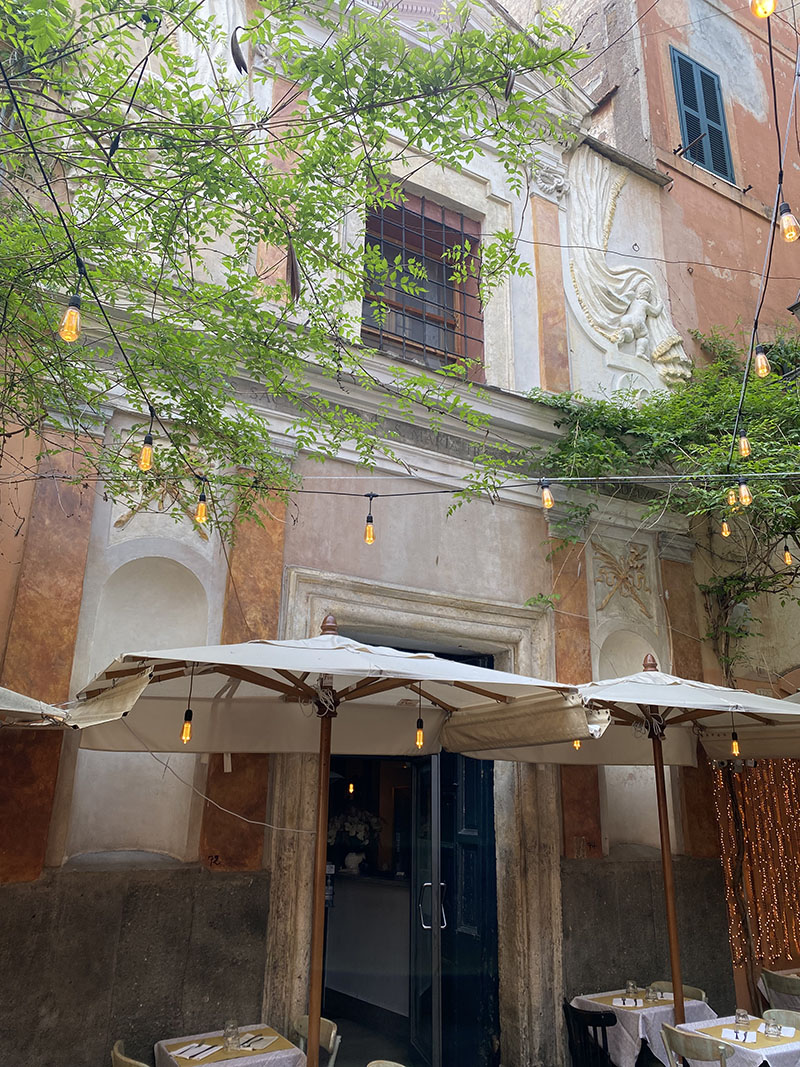The church of Santa Maria della Clemenza is a deconsecrated church in Rome, in the Trastevere district, located at Vicolo del Piede, 13/A.
The small church dates back to the early 17th century. In 1675 it was granted to the Archconfraternity of the Blessed Sacrament of Santa Maria in Trastevere, wording that can still be read today in the lintel above the front door. A particular object of worship was a Byzantine icon of the8th century, depicting the so-called "Madonna of Clemency."
After the 1870 remained closed for eighteen years; then, restored and expanded, it was reopened for worship on March 10 1888. Above the door in the interior was a marble epigraph, placed there by the brethren in the 1705, to remember the benefits and privileges with which Clement XI, formerly primicerius and later protector of the confraternity, decorated it along with the altar of the small oratory.
When the fraternity ceased to exist in the early part of the Twentieth Century, the oratory was deconsecrated and put to civilian use.
The Madonna of Clemency is one of five early medieval Marian icons preserved in Rome. It is located in the church of Santa Maria in Trastevere, in a chapel to the left of the high altar specially built by Cardinal Marco Sittico Altemps and, according to Carlo Bertelli's hypothesis, designed by the Polish canon of the Trastevere church Thomas Treter and completed in 1592-1593. These were the contrasting times of the Roman Counter-Reformation, and the image was perceived as a relic, an object of worship placed above the altar to protect and spread the values of the Catholic faith.
However, while the symbolic role and sacred value were underscored by this lavish setting, the figurative aspect of the image took a back seat: placed above the high altar, the icon was enclosed within a kind of aedicule on two columns, which in turn was set in a rectangular niche.
"...Basilica, que appellantur sancta Maria trans Tyberis. Ibi est imago sanctae Mariae que per se facta est" (Salzburg Catalog)
The image believed to be "acheropita," that is, not painted by human hands but "made through him" (que per se facta est) referred to by the author of the seventh-century Salzburg Catalog is most likely the ancient Madonna of Clemency dated between the sixth and seventh centuries (one of the oldest preserved in the West) and kept in Santa Maria in Trastevere in the Altemps Chapel. It is believed, among other things, that it was the presence of this icon that motivated the dedication of the Basilica to the Mother of God.
Made in encaustic, an ancient and refined painting technique in which color is mixed with molten wax, this large icon painted on three pine boards depicts the Virgin Mary dressed and adorned with jewels like a Byzantine basilissa, an empress, seated on a throne with the Child on her lap. At her feet at lower right is the praying pope.
Mary, for having conceived the son of God assumed kingship in heaven. This is the mystery that is depicted in the icon and underscored by the presence of the angels placed behind her and the inscription on the edge of the icon, which, though terse, reads, "For God himself was made from your womb...the princes of the angels rest and marvel at you who bear the Born One in your womb...."
It is precisely in the West, in Rome, an ecclesial seat far removed from the iconoclastic struggles that caused the destruction of so many images, that the oldest icons, the artistic expression of the undivided Church, have been preserved; of this group of ancient icons painted between the 6th and 8th centuries, the Icon of Clemency is also part of it, which, although greatly damaged, manifests an interesting and mutual influence between the Byzantine and Roman styles and ideally refers to the Unity of East and West. The panel expresses in its artistic language and religious content the values of the Church of Rome where Mary is also a figure of the Church, Mother of God and the Church of Rome represented by the pope prostrating himself at her feet-perhaps John III (561-574) or Benedict I (574-579) his successor.

